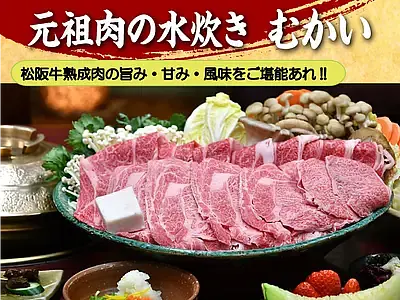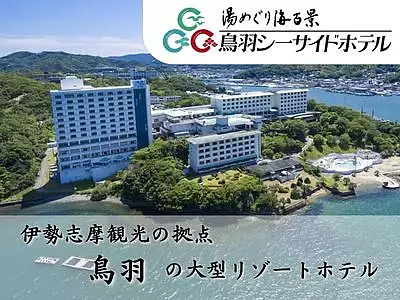【美し国・三重 自転車道中記:多気編】観光ガイドにあまり登場しない穴場で郷土の美味を訪ねるサイクリング
掲載日:2020.03.16
三重県生まれ三重県育ちの自転車ライター 浅野真則が、三重県の魅力を自転車で巡りながら紹介する本企画。10回目となる今回は、三重県の中部に位置する多気町で、茶畑の広がる山里を駆け抜け、歴史を感じるスポットを訪ね、地元の郷土料理、地元産の食材を使った絶品スイーツなど堪能してきました。
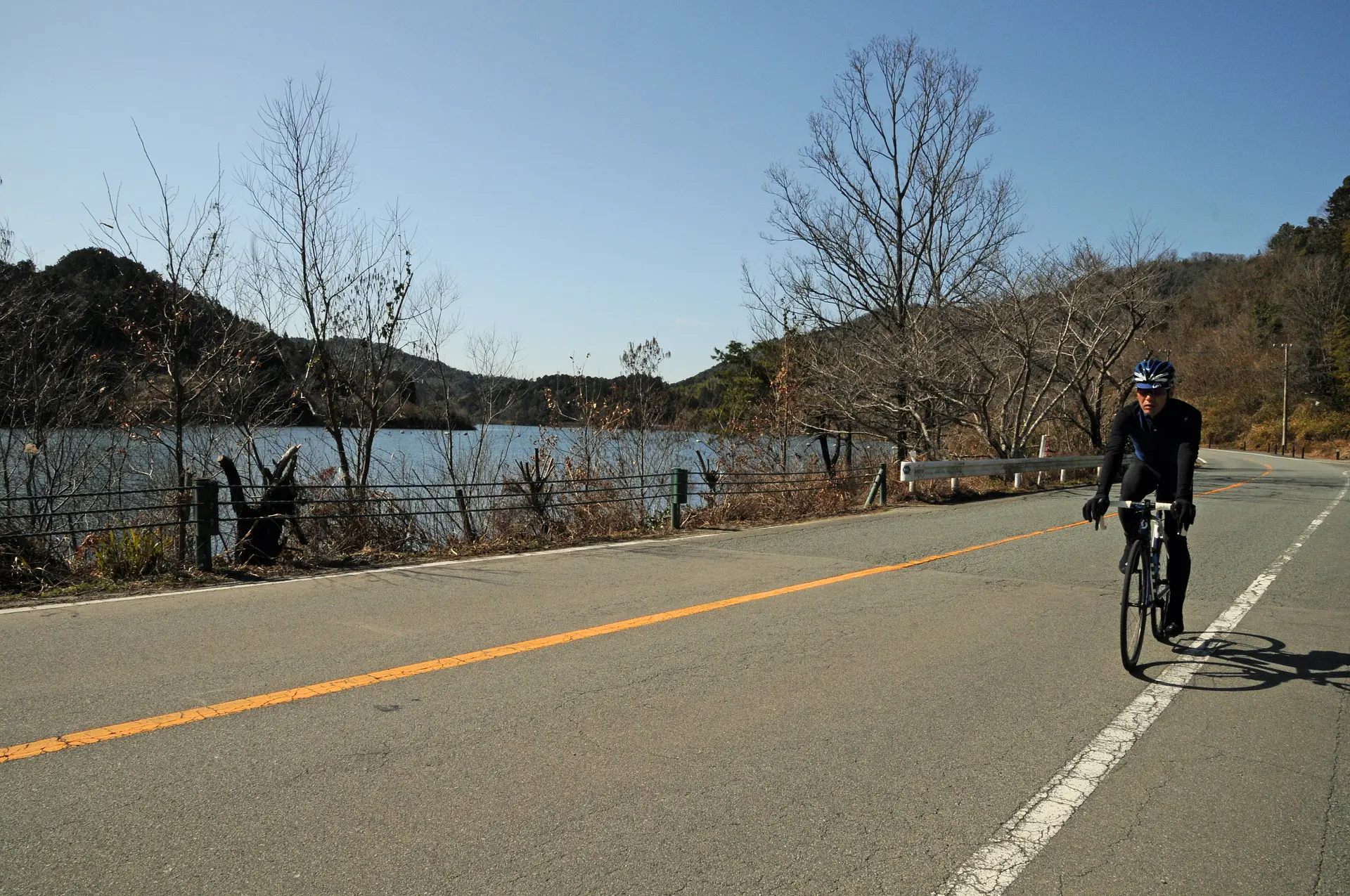
三重県中部の多気町は、日本屈指の清流・宮川と櫛田川という2つの川の流域に広がる自然豊かな場所。丹生大師や近長谷寺、少し足を延ばせば熊野古道・女鬼峠など、歴史を感じさせるスポットが点在しています。さらに地元の女性たちがつくる郷土料理や、自然豊かなこの地で生産された卵を使ったスイーツ、昔から地域の人や旅人に愛された街道の名物餅など、ご当地のグルメスポットもいっぱい!
そんなポイントをつなぎながら、交通量も少なく適度に起伏もあってサイクリングにもピッタリなコースを考えてみました!
【今回のトップ画像:五桂池(多気町)】
■旅人 自転車ライター・浅野真則
自転車歴およそ20年。三度の飯+おやつと同じぐらい自転車が好き。自転車を愛するあまり、フリーの自転車ライターに転身。仕事と称して自転車に乗り、プライベートでもレースやロングライドを楽しむ。
ーーーーーーーーーーーー
「美し国・三重 自転車道中記」とは?三重県生まれ三重県育ちの自転車ライター・浅野真則が、三重県の魅力を自転車で巡りながら紹介します!
「美し国・三重 自転車道中記」他の記事はこちら!
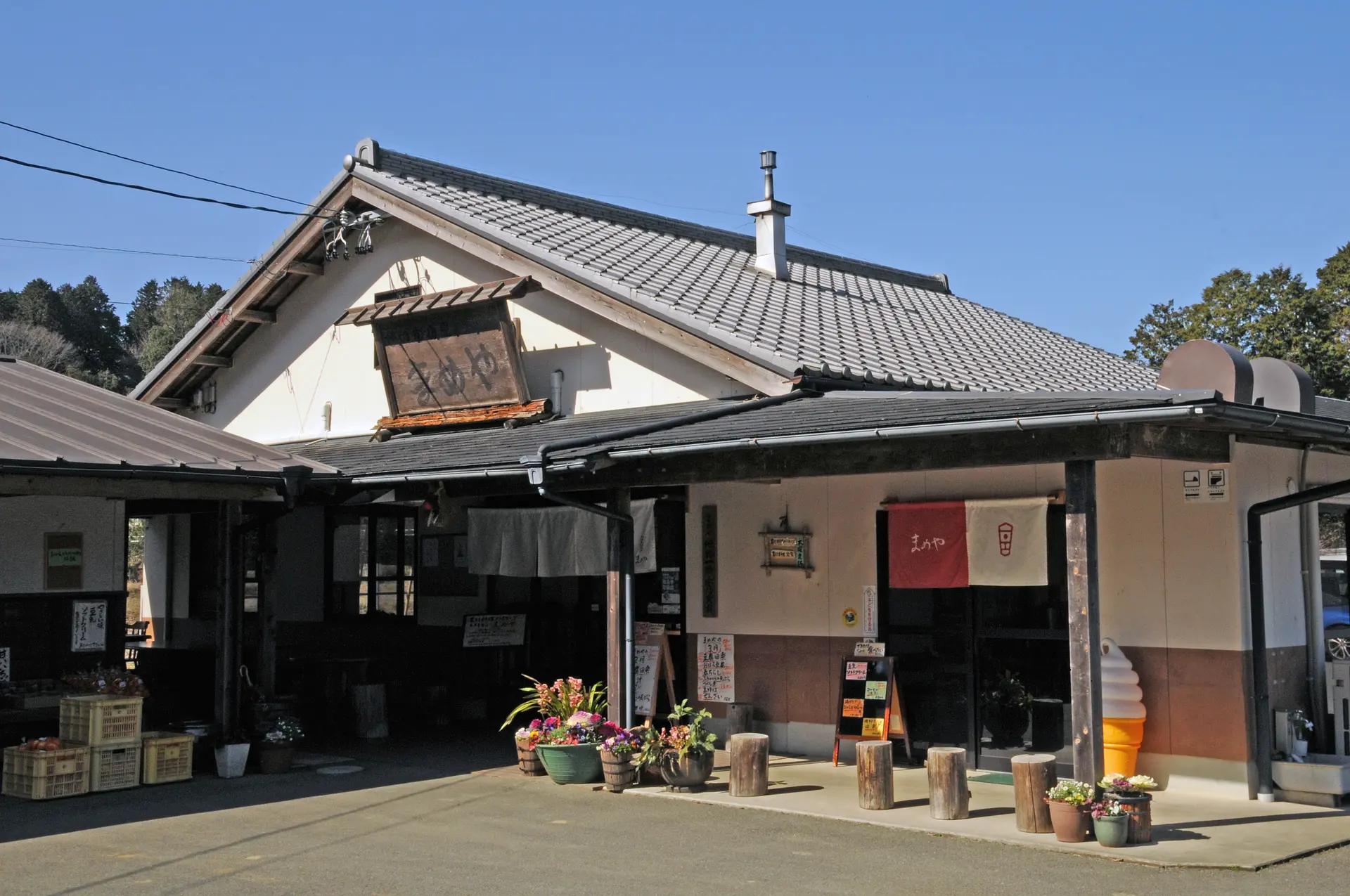
■郷土料理を味わい、丹生大師と門前町をぶらっと散策
◆まめや
今回は、多気町と度会町、大台町という三重県中部の内陸エリアが舞台です。拠点として選んだのは丹生大師の門前町にほど近い「まめや」というお店です。お店を利用する前提で駐車場を利用させていただけることになりました!(大人数で走りに来る場合は乗り合わせるなどの配慮をお願いします)
この日は自転車ビギナーの本連載担当、村上さんも走れるコースをと思い、比較的上りが少なめのコースを考えていましたが、肝心の村上さんが仕事の都合でどうしても来られなくなったとのこと。今日も一人で機材を担いで気ままに走ります。
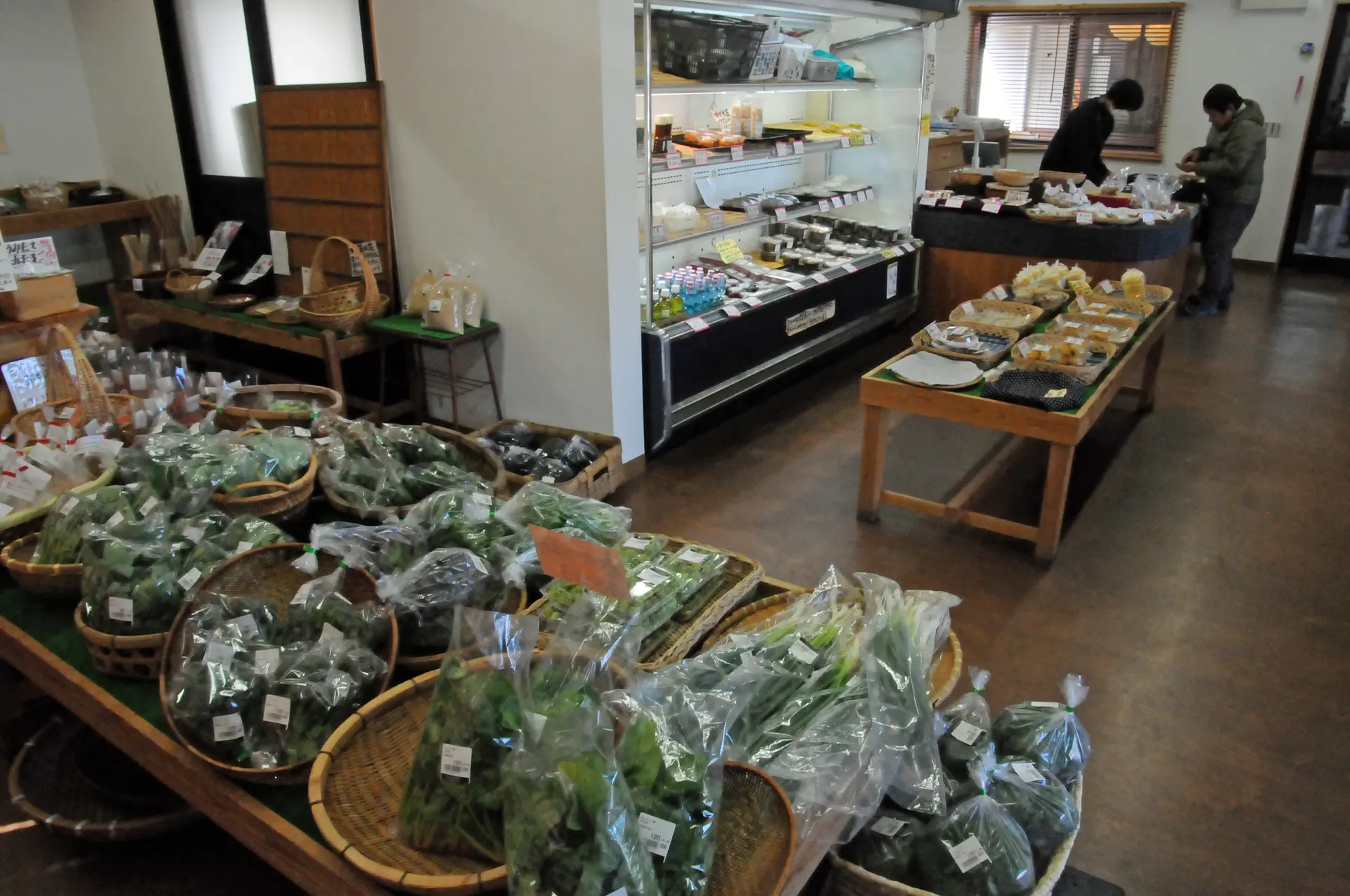
まめやの看板には「おかあちゃんたちのお店」とあります。というのも、地元の女性たちが地元の食材を使って作った郷土料理のバイキングが楽しめる食堂があるからです。また、地物の野菜をお値打ちに味わえる農産物の特売所も併設されています。
いつもならライドのご褒美として旅先のごちそうを楽しむところではありますが、お店の方の事前情報によると「郷土料理のバイキングはとても人気があり、開店から時間が経つと一部の料理が少なくなっている可能性もあるので、早めの来店がおすすめです」とのこと。
まずエネルギー補給をしてからのんびりとライドを楽しむことにしましょう!
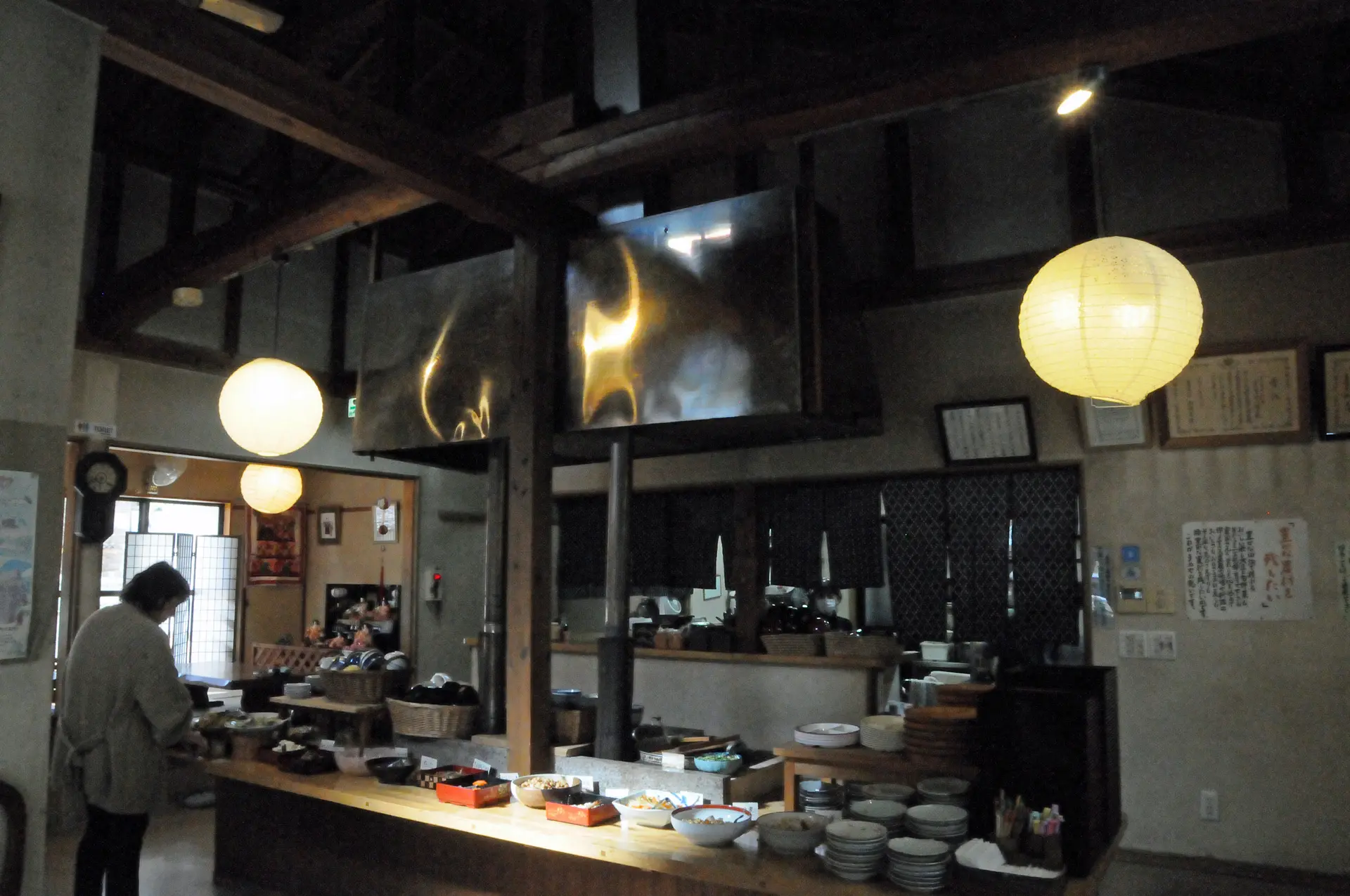
さっそくのれんをくぐって食堂へ。店内には温かくて優しい手料理の香りに満ちていて、まるで実家に帰ってきたかのような懐かしい気持ちになります。
バイキングの料理が並ぶ棚には、店名の由来になった大豆を使った料理や郷土の野菜を使った料理が並んでいます。まめやのスタッフ・北川哲也さんによると、料理は毎日25~30種類は並ぶのだそう。料理は日替わりで、この日は豆や地元産の野菜を使った料理のほか、焼きたてのみそ田楽、手作り豆腐、猪汁もありました。
このあたりでは大豆の生産が盛んで、この土地の在来種もあるのだそう。現在では在来種を生産する農家が減ってしまったとのことですが、このレストランではそんな貴重な在来種の大豆を味わうこともできます。
「在来種は一般的な大豆と比べて粒が大きくて、甘く、食感もいいんです。五目煮や炒り豆として提供していますが、町外では味わえないので貴重ですよ!」
と北川さん。これはぜひ味わってみなければ!
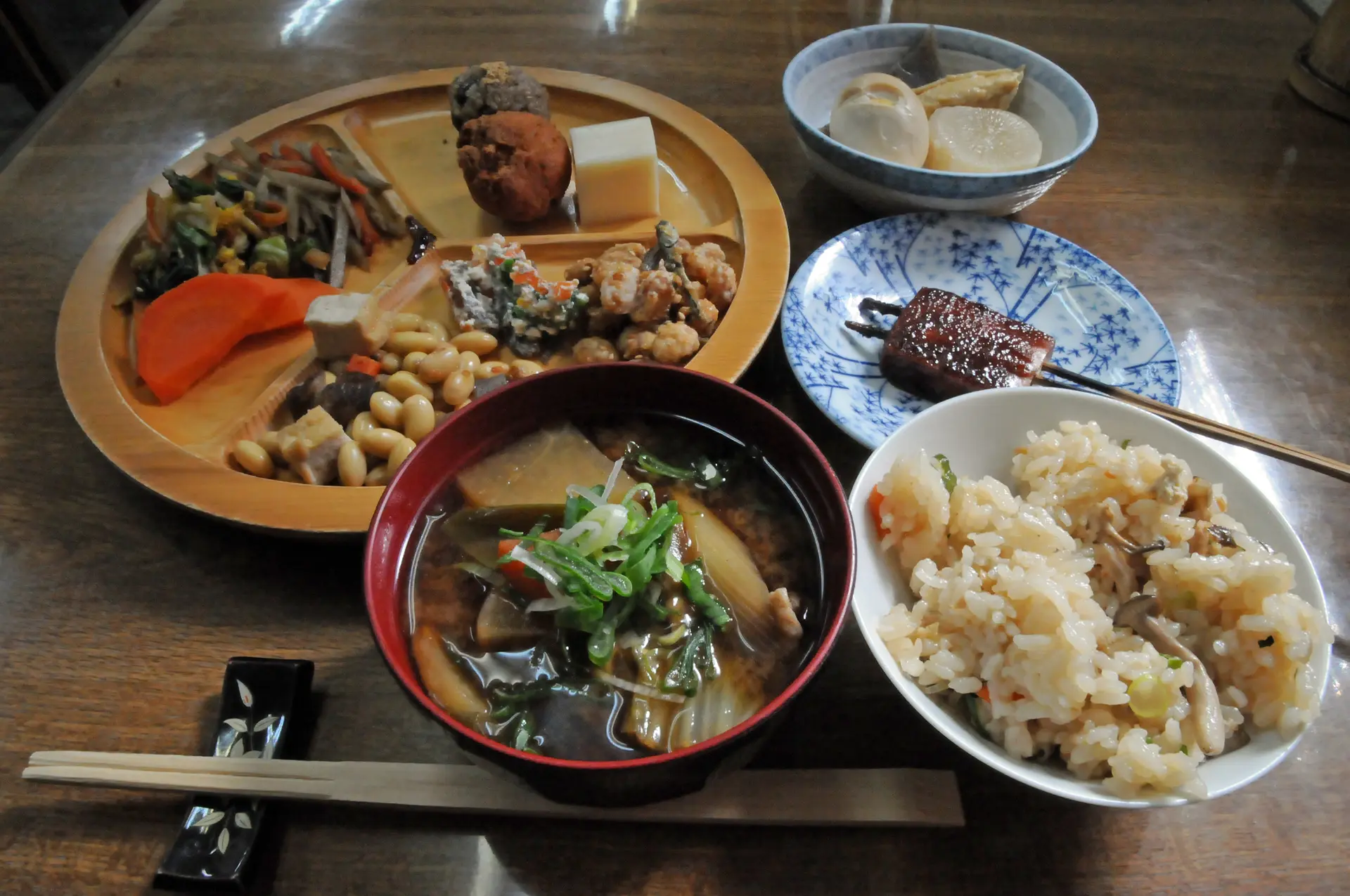
食べたいものをいろいろ盛り付けてみました!
五目煮に炒り豆、にんじんの煮物、きんぴらごぼう、ぬた、おでん、みそ田楽、味ご飯、猪汁のほか、おからドーナツや五穀米おはぎ、豆乳寒天などのデザートもあります!野菜中心で大豆のタンパク質もたっぷり採れ、栄養バランスもいいので、ヘルシー志向の女性はもちろん、体重管理にシビアな持久系アスリートにもピッタリです!
味付けも郷土料理らしい素朴さとやさしさがあり、気取らずにいただけて実に味わい深いものでした。旬のものを地産地消でいただくことで食材の風味を強く感じられますし、作り手の“おかあちゃん”たちの愛情も感じます。本当においしくて、走る前だというのに満腹になるまで食べてしまいました(笑)。
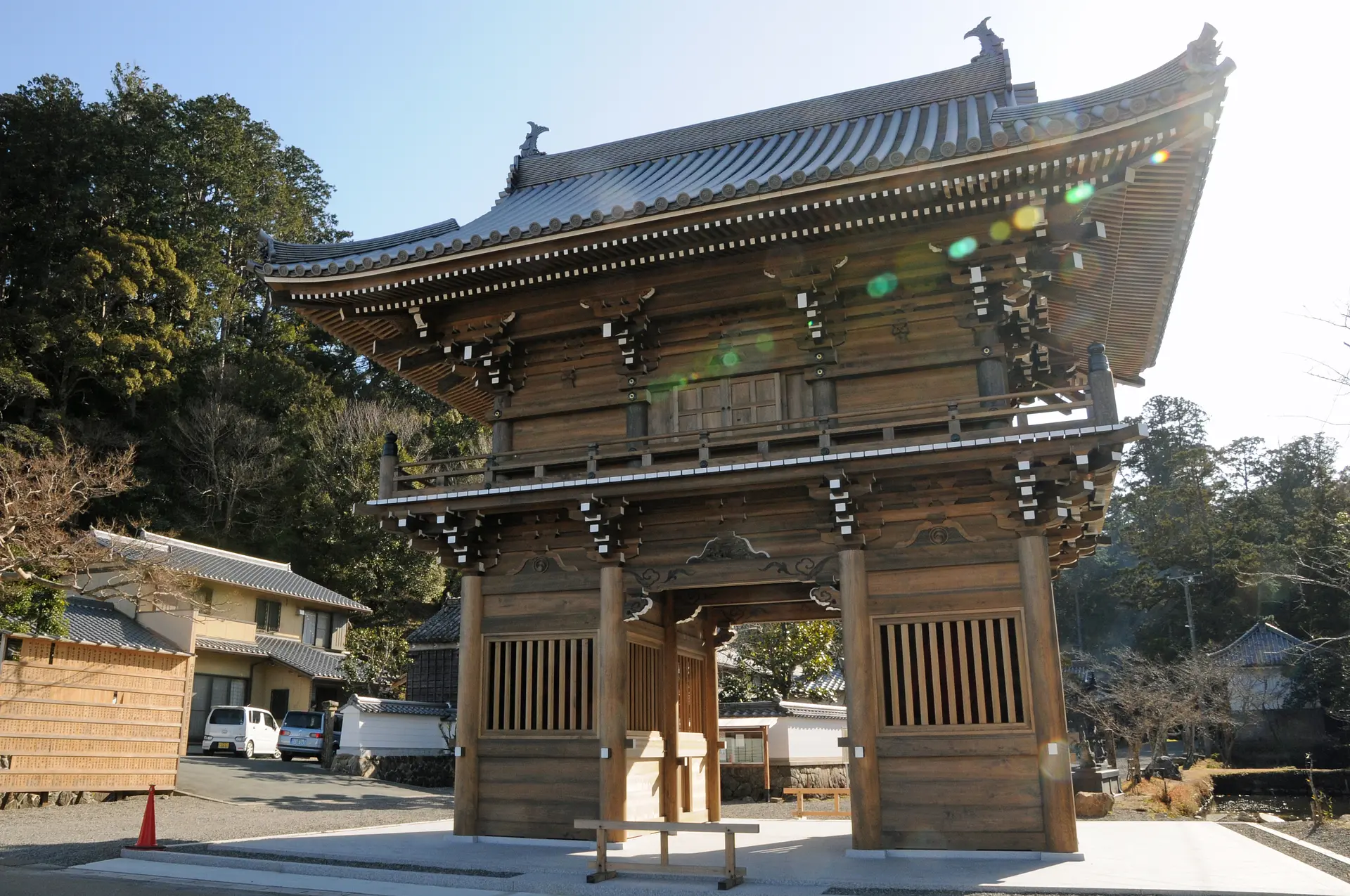
◆丹生大師
お腹も心も満たされてお店を後にします。いきなりハードに走るのもつらいので、まずは丹生大師とその門前町を散歩感覚で走りましょう。
お店を出て数百メートルで、右手に大きな山門が現れます。丹生大師です。
丹生大師は正式には「女人高野丹生山神宮寺成就院」といい、創建は774年。813年には弘法大師がこの地に立ち寄り、七堂伽藍を建立したと伝えられています。「女人高野」というのは、弘法大師が創立した高野山が女人禁制だったのに対し、丹生大師は女性の参拝も認められていたためです。
立派な山門は、丹生がかつて全国有数の水銀の産地として栄えたことを物語ります。丹生の水銀は東大寺の大仏にも使われ、「丹生の在家一千軒計り有りて民屋富みたる景気なり(勢陽雑記)」と言われるほどだったといいます。
丹生山神宮寺(丹生大師)
有り
〇JR・近鉄松阪駅から松阪大石線にて約23分「射和」下車、相可一区まで徒歩5分、相可一区から町営バス(平日のみ)に乗り継ぎ約20分丹生大師前下車
〇JR多気駅から町営バス(平日のみ)で40分
※土日祝はでん多をご利用ください
☆多気町町営バスのご案内☆
・町営バス
・多気町乗り物マップについて
・伊勢自動車道「勢和多気IC」から車で約10分
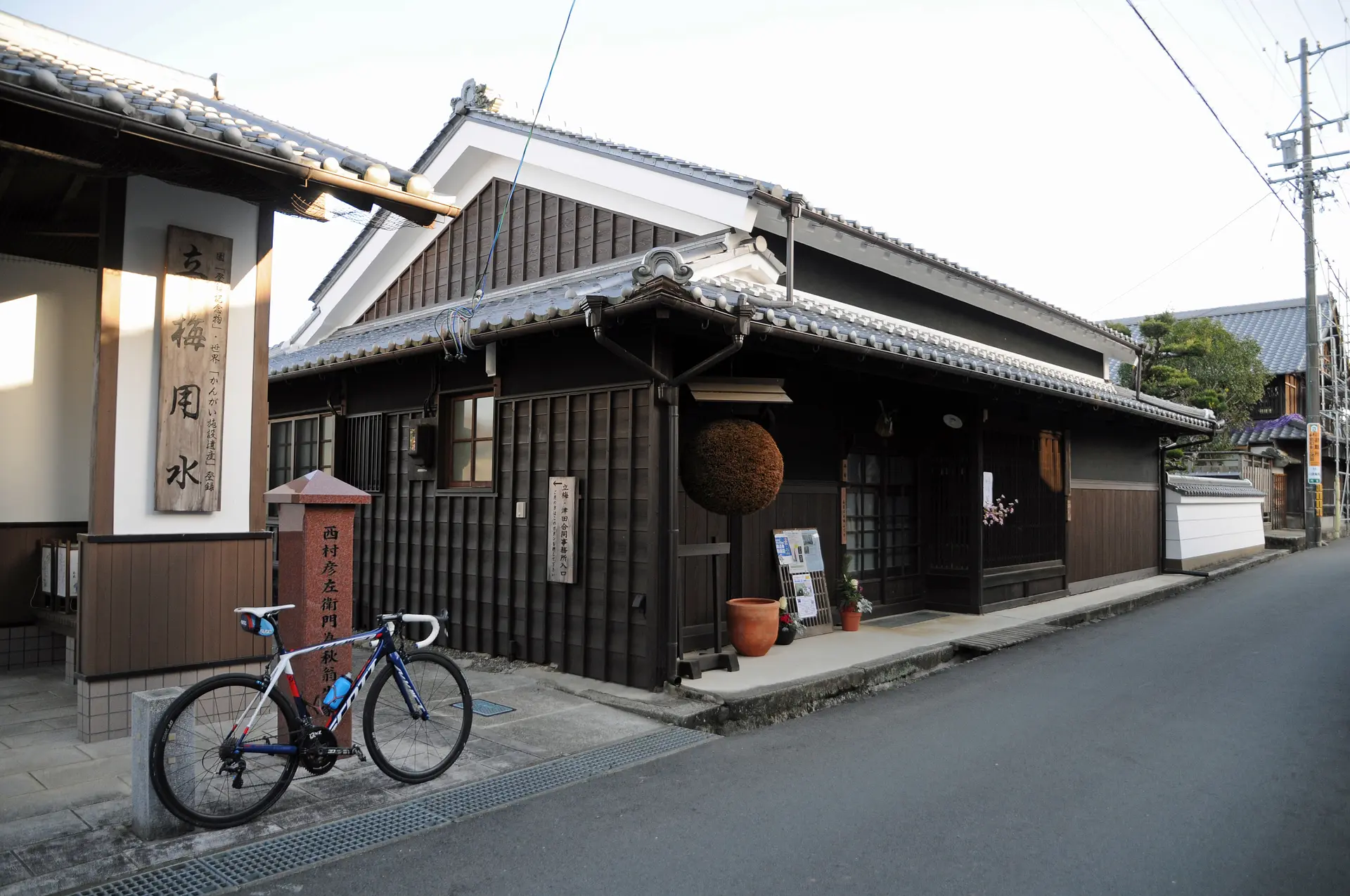
山門の正面の道を西に向かうと、丹生の門前町があり、やがてかつての和歌山街道と合流します。このあたりには所々に格子戸のある妻入りの民家が残っていますが、往時を偲ばせるものは少なめです。
でも、町並みに昭和のころの雰囲気が残っていて、小学生のころに楽しんだ路地裏散策を思い出し、それはそれで懐かしい気持ちにさせてくれます。
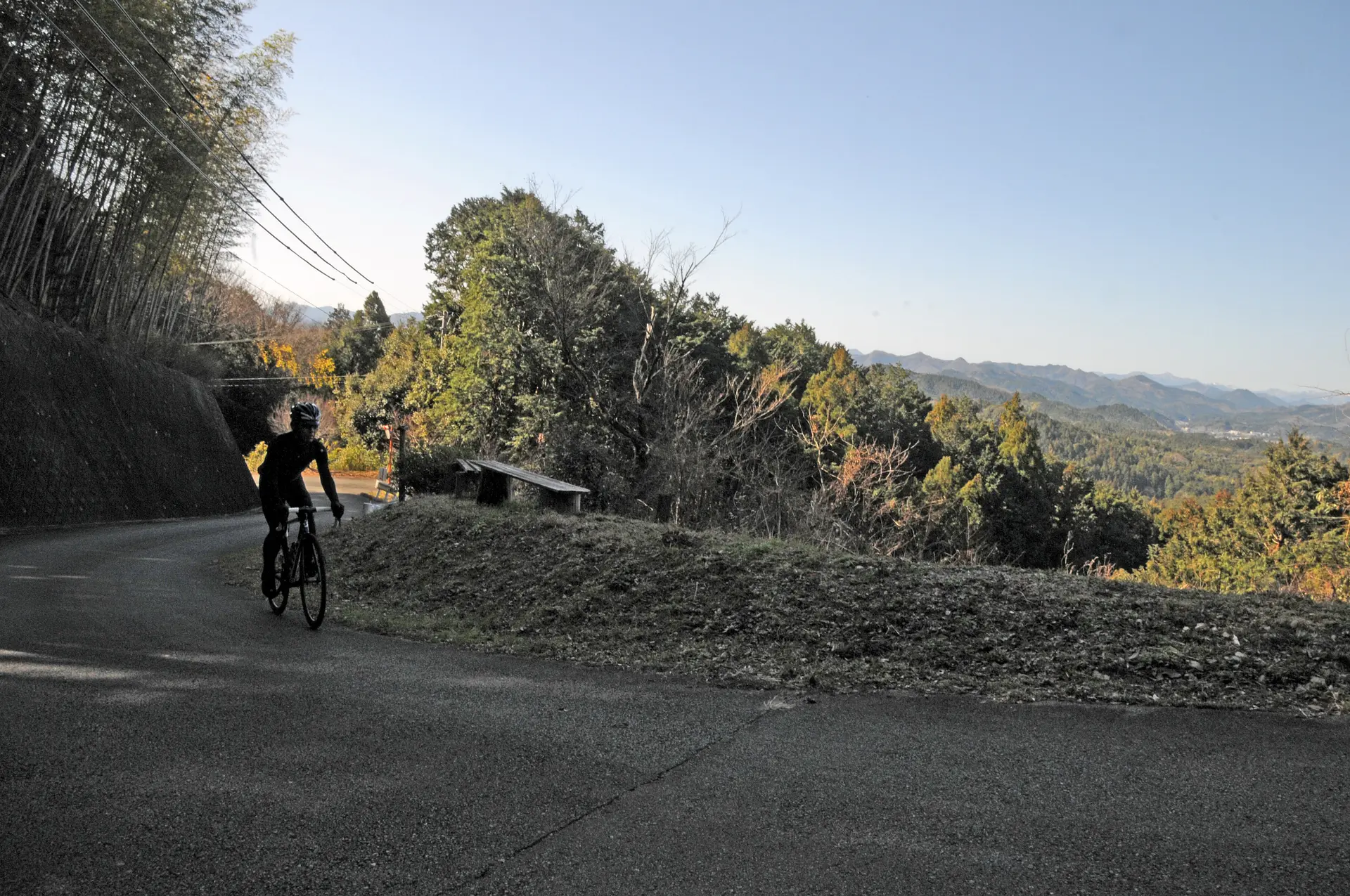
■山の上の古刹を訪ね、高校生レストランのある五桂池のほとりへ
◆近長谷寺(きんちょうこくじ)
次は城山の上にある近長谷寺を目指します。丹生大師の前を南北に走る県道421号を北進して集落を抜けると、視界が急に開け、目の前に田園風景が広がります。
県道702号との交差点を右折し、さらに東へ。この先は緩い勾配の後、2kmほど急勾配が続きます。特に近長谷寺の案内表示にしたがって左折した先から1kmほどはかなりの急勾配です。まだ先は長いので、早めに軽いギヤに変速して、脚をクルクル回しながら上りましょう。
近長谷寺への上りの途中、左側に見晴らしのよいポイントがあります。これは上った者だけが味わえるご褒美です!
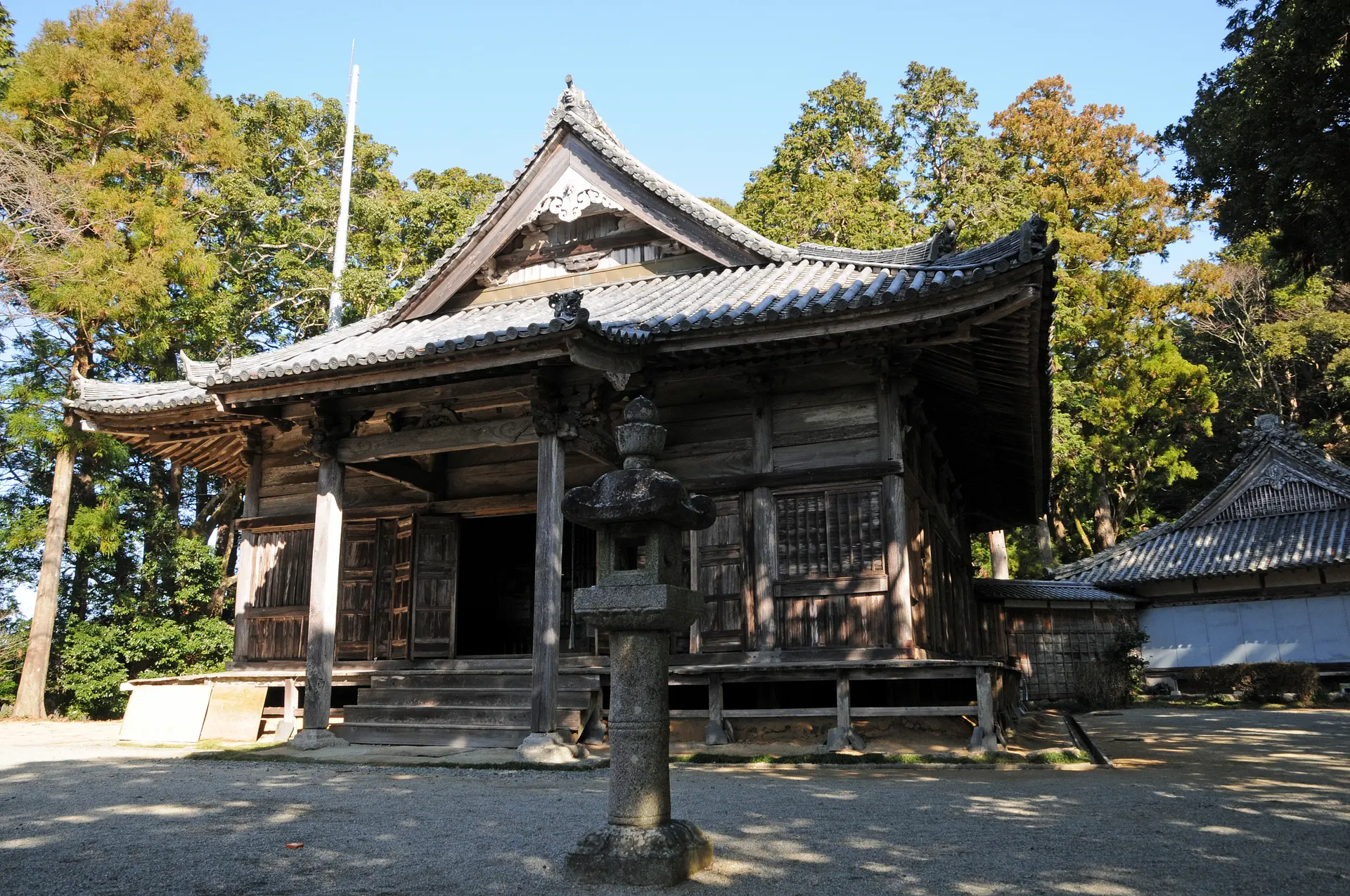
上りきったところに駐車場があり、その先は近長谷寺に向けて遊歩道が整備されています。参拝する場合は自転車を止めて歩いて行きます。参道はかなり急勾配でロードバイク用のビンディングシューズでは歩きにくいので、ベアフットシューズのような軽くて歩きやすいシューズがあると便利です。
山道を数百メートル上ると、目の前に近長谷寺の本堂が現れます。木造の立派なお堂です。
近長谷寺は伊勢国の豪族らによって885年に創建された真言宗山階派の寺で、正式には丹生山近長谷寺といいます。国指定文化財に指定されている高さ6.6mの十一面観音立像がご本尊です。
道中の安全を祈願し、サイクリングに戻りましょう。
近長谷寺
200円
拝観:日・毎月18日・正月三日間(要予約)
(9:30~15:30)
・JR紀勢本線「佐奈駅」から徒歩で約50分
・JR・近鉄「松阪駅」から「三瀬谷」行きバス26分「前村」下車・徒歩で約60分
・伊勢自動車道「勢和多気IC」から車で約15分
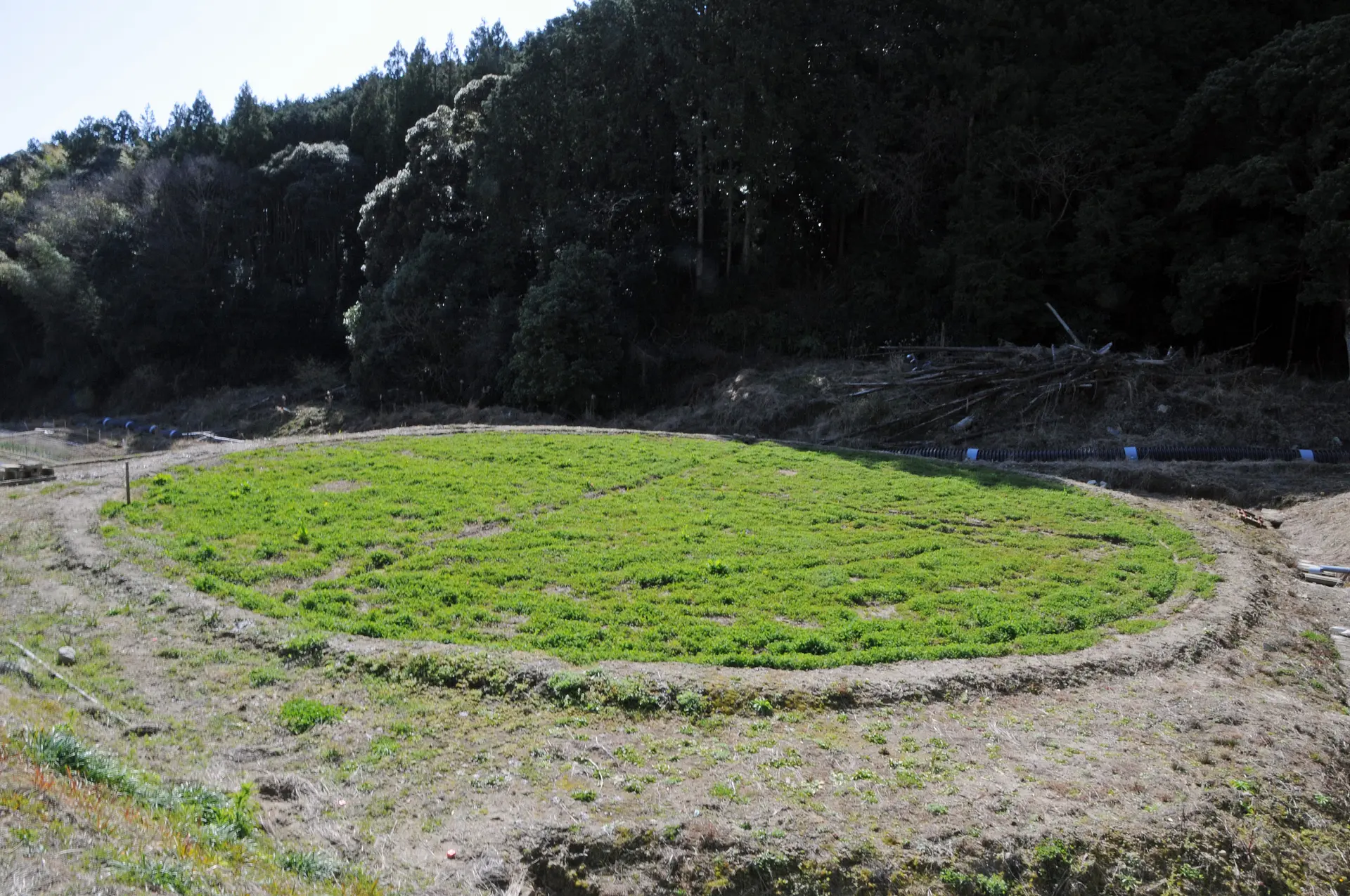
◆長谷の車田
先ほど苦労して上ってきた城山を一気に下ります。こがなくてもスピードに乗るので実に爽快ですが、見通しの悪い急カーブが多いので、あくまで安全走行で!
麓の長谷の集落に下りると、目の前に円形の水田が現れます。長谷の車田です。これは1998年に地元の地域おこしグループ・一八会が「古里の景観や農業の大切さや稲作文化を後世に伝えよう」と作った水田。近長谷寺に祀られている十一面観音にちなみ、半径が11mあるそうです。
毎年、5月に御田植祭、9月に収穫祭を行っていて、祭りの日には多くのカメラマンが訪れる名所ですが、2017年の台風21号による土石流で埋まってしまい、それ以来祭りも中断されているそうです。取材日には地元の方たちの尽力で車田の特徴である円形の外観があらわになっていました。2021年に御田植祭や収穫祭を再開するのを目標にしているそうなので、その折にはぜひ見に行きたいものです。
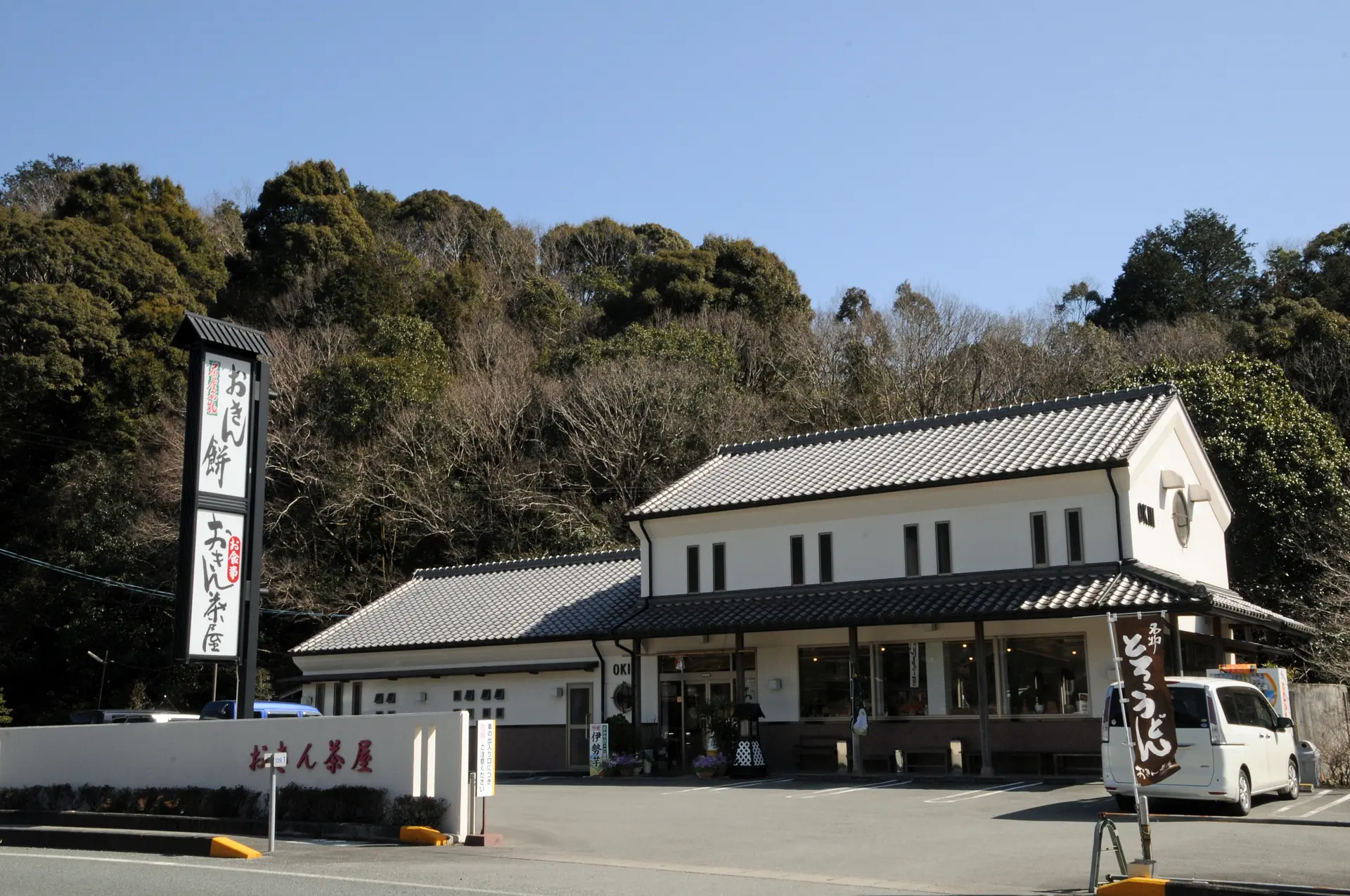
長谷の集落を後にし、再び県道702号へ。この道に沿って国道42号を目指します。このあたりは道幅が広めで交通量もそれほど多くないので、気持ちよく走れます。
JR紀勢本線の踏切を渡ると、目の前に国道42号が現れます。道路を渡ったところにおきん茶屋があります。
おきん茶屋といえば、店名の由来になった「おきん餅」が名物です。かつてこの地に伊勢神宮とその別宮滝原宮の両宮を参拝する人々をもてなす茶屋があり、そこのおきんというおばあさんが真心こめて作ったよもぎ餅がおきん餅の始まりだそうです。
柔らかくてヨモギの香りの高い餅の中に甘めの粒あんが入っていて、素朴な味わいが後を引きます!販売は5個入りが最小単位ですが、個別に包装されているのでサイクリング中の補給食にも使えそうです!
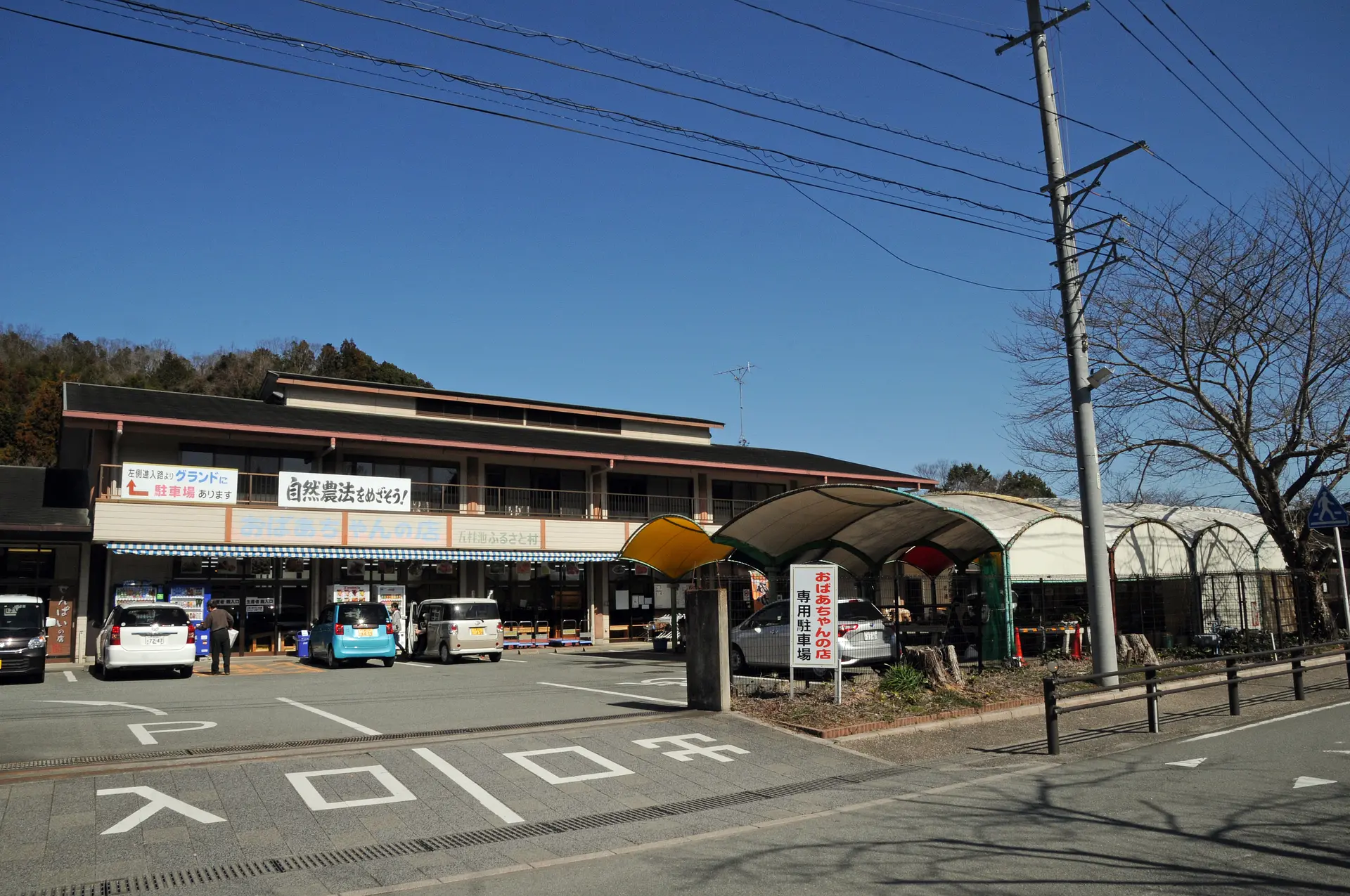
◆五桂池/五桂池ふるさと村
おきん茶屋を出発し、国道42号を北上します。小さな丘をひとつ越え、最初の信号交差点を右折。後は道なりに進めば右手に五桂池が見えてきます(1枚目の写真です!)。
五桂池を右手に見ながら池の畔の道を走ると、やがて左手に五桂池ふるさと村が現れます。
ここにはドラマ「高校生レストラン」のモデルになった県立相可(おうか)高校生が運営する「まごの店」や動物園があります。
取材日はまごの店はお休みでしたが、営業日には県外からもお客さんが訪れるほどの人気だそうです。実は僕もまだおじゃましたことがないので、今度は営業日に訪れたいものです。
ごかつら池ふるさと村
◆ロッジ1棟1泊(14:00~10:00)
宿泊4,500円~
会議・休憩1,500円~
※人数・日数により追加料金が発生しますので詳しくはお問い合わせください。
◆バーベキュー コンロ1台3,000円~、手ぶらバーベキューセット(4人前)12,000円~
9:00~17:00
マルシェグランマキッチン、毎週火曜定休
あり400台
JR紀勢本線「佐奈」駅下車徒歩20分
JR「多気」駅から「VISON」行きバス16分「五桂池ふるさと村」
伊勢自動車道勢和多気ICから東へ車で7分
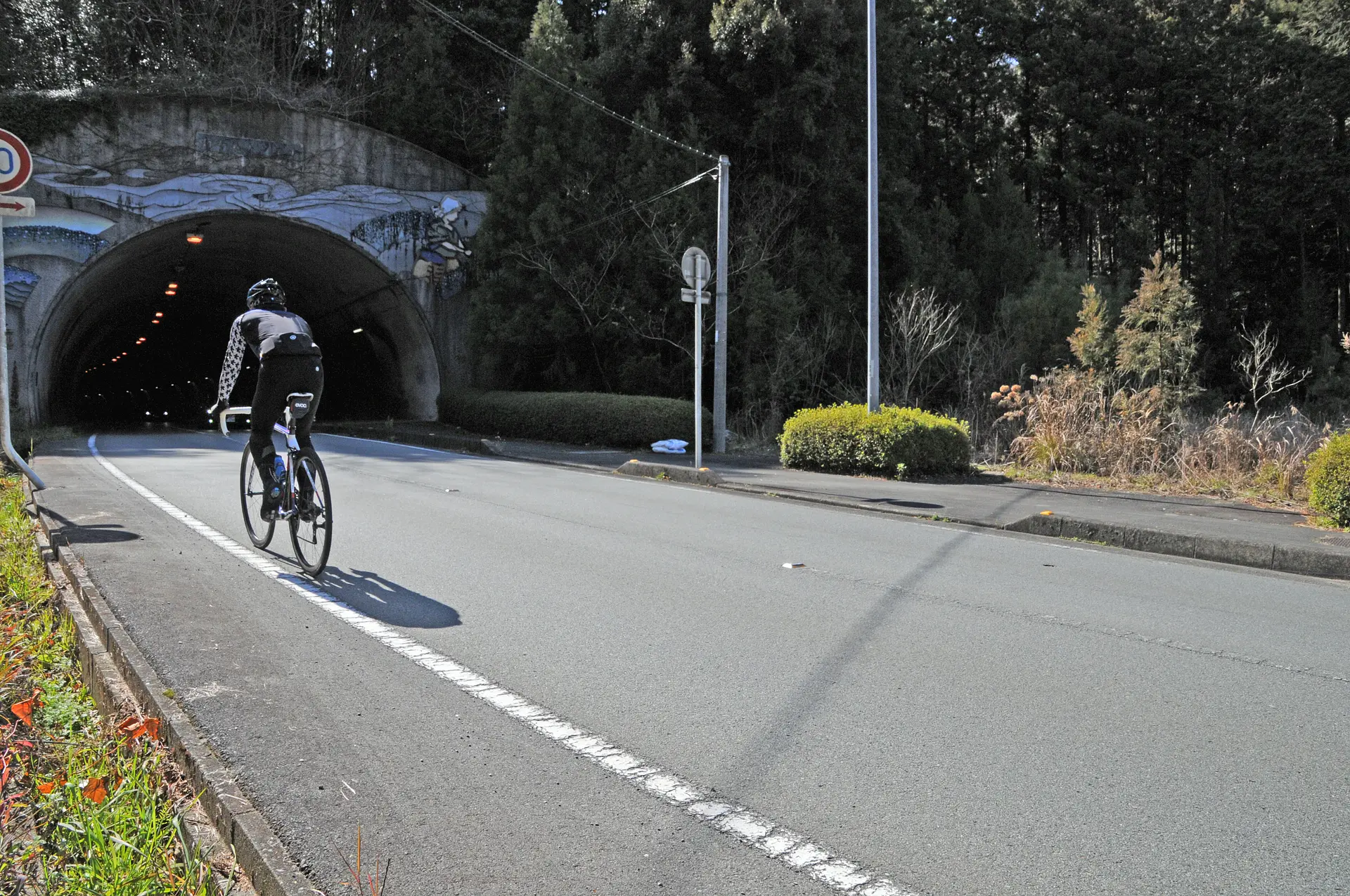
◆女鬼(めき)峠
五桂池ふるさと村を東に進み、T字路を右折して県道119号へ。なだらかな上り坂が現れ、上りきったところにトンネルが通っています。新女鬼トンネルです。
このトンネルの東側には熊野古道の女鬼峠があり、それにちなんだものでしょう。かつての旅人は徒歩で女鬼峠を越えて聖地・熊野を目指しましたが、現代の旅人である僕は自転車で新女鬼トンネルを通って先に進みます。
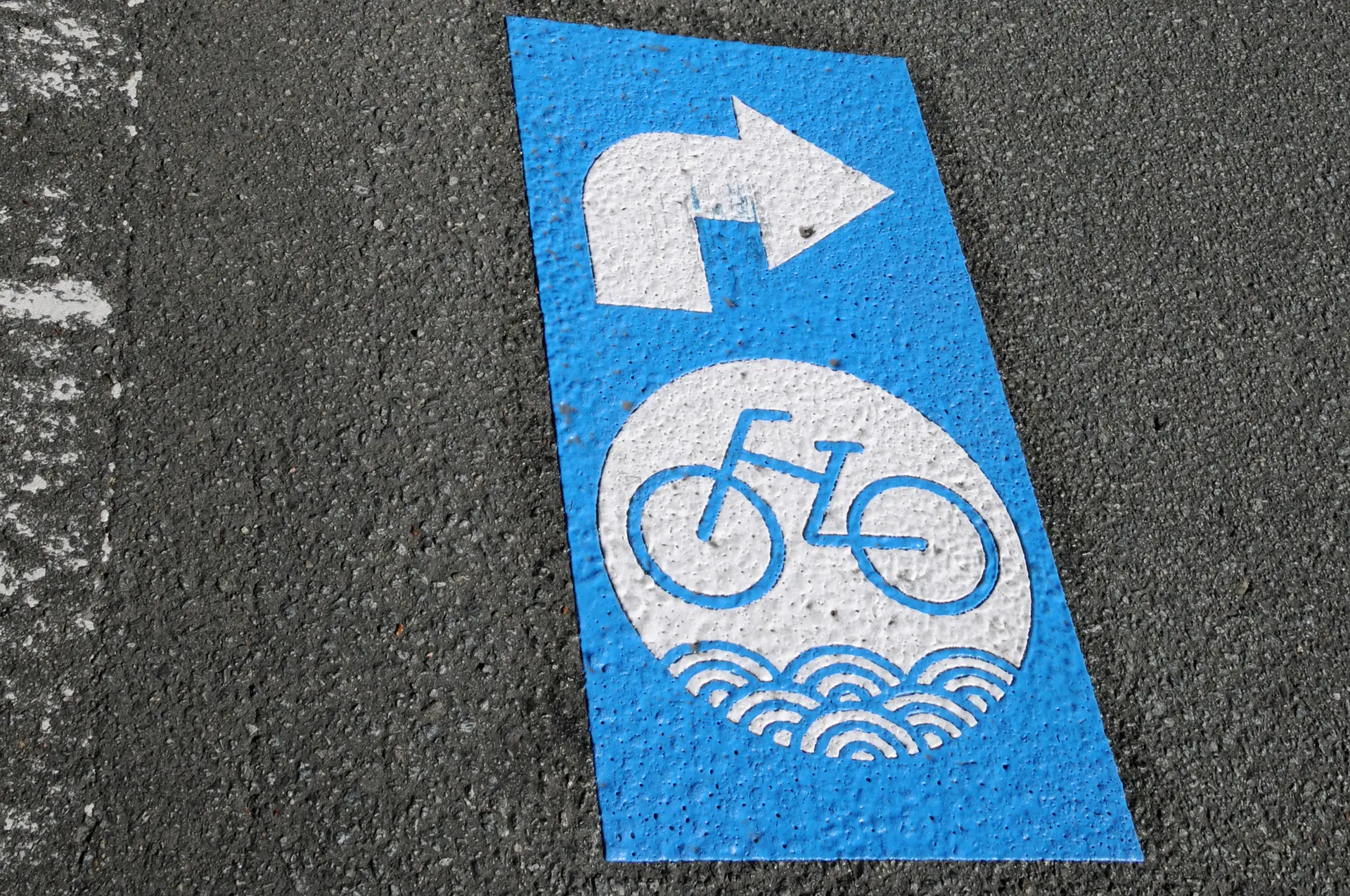
■太平洋岸自転車道で日本一の清流の流域をゆき、絶品卵のスイーツでシメ!
◆太平洋岸自転車道
新女鬼トンネルを抜けると、茶畑の広がる田園地帯を抜けるアップダウンのある道がしばらく続きます。最初の信号を右折すると、路面に青海波と自転車をモチーフにしたサインマークと矢羽根が描かれています! 思いがけず太平洋岸自転車道を走ることになりました!
太平洋岸自転車道とは、千葉県と和歌山県を結ぶ全長1400kmの大規模自転車道で、両県のほか神奈川、静岡、愛知、三重の計6県を通ります。
三重県内は鳥羽市から志摩市や南伊勢町を経て東紀州に抜ける海沿いのルートと、鳥羽市から伊勢市や度会町、大紀町などを経て東紀州に抜ける内陸部のルートが整備中で、コースに矢羽根と太平洋岸自転車道を示すサインマークが描かれています。
個人的な感想としても、走りやすく、景色もいいところを選んでいると感じます! 近いうちに三重県内だけでも全線走破したいものです!
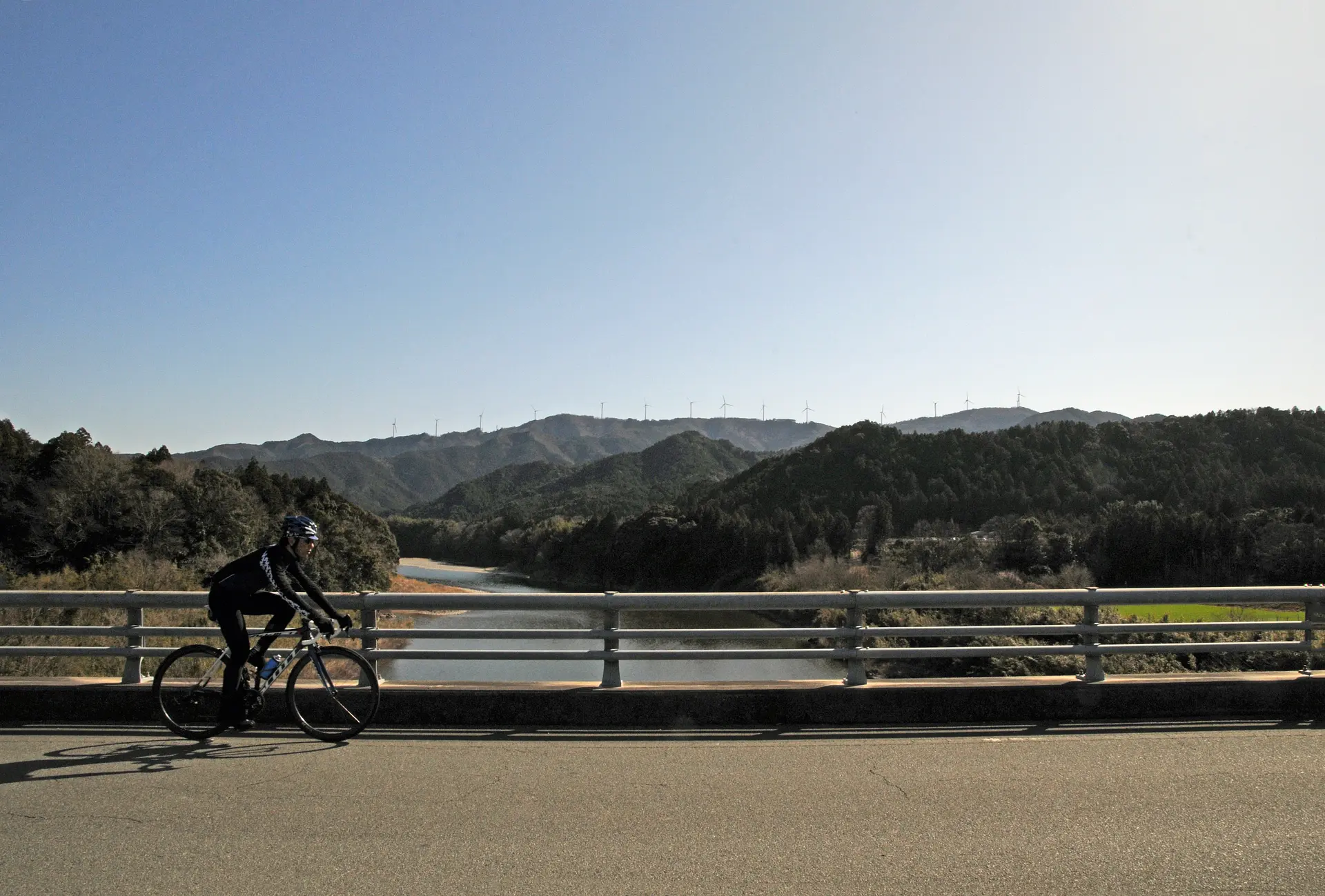
僕がこのコースで一番好きな風景は、このコースの太平洋岸自転車道に入ってすぐの宮川に架かる橋の上からの眺めです。
宮川の向こうに獅子が岳が見え、風力発電の風車が何基も並んで建っています。このあたりの宮川は、川幅も広く流れもゆったりとしていて、のどかなこのあたりの雰囲気とも非常にマッチしている気がします。ガイドブックには載っていませんが、個人的におすすめの風景のひとつです!
ここからしばらくは太平洋岸自転車道を走ります。結構アップダウンはありますが、麻加江の集落を過ぎると信号もなく、交通量も少なめ。マイペースで気持ちよく走れて、サイクリングにピッタリのルートです。6kmほど走ると野原という信号交差点がありますが、ここまで信号はありません。
野原交差点を右折し、宮川を渡って道なりに進み、県道709号を経て国道42号へ。しばらく国道を北上します。この区間も交通量はそれほど多くはありませんが、今まで走ってきたところと比べると大型車の往来も多いので気を引き締めて走りましょう。
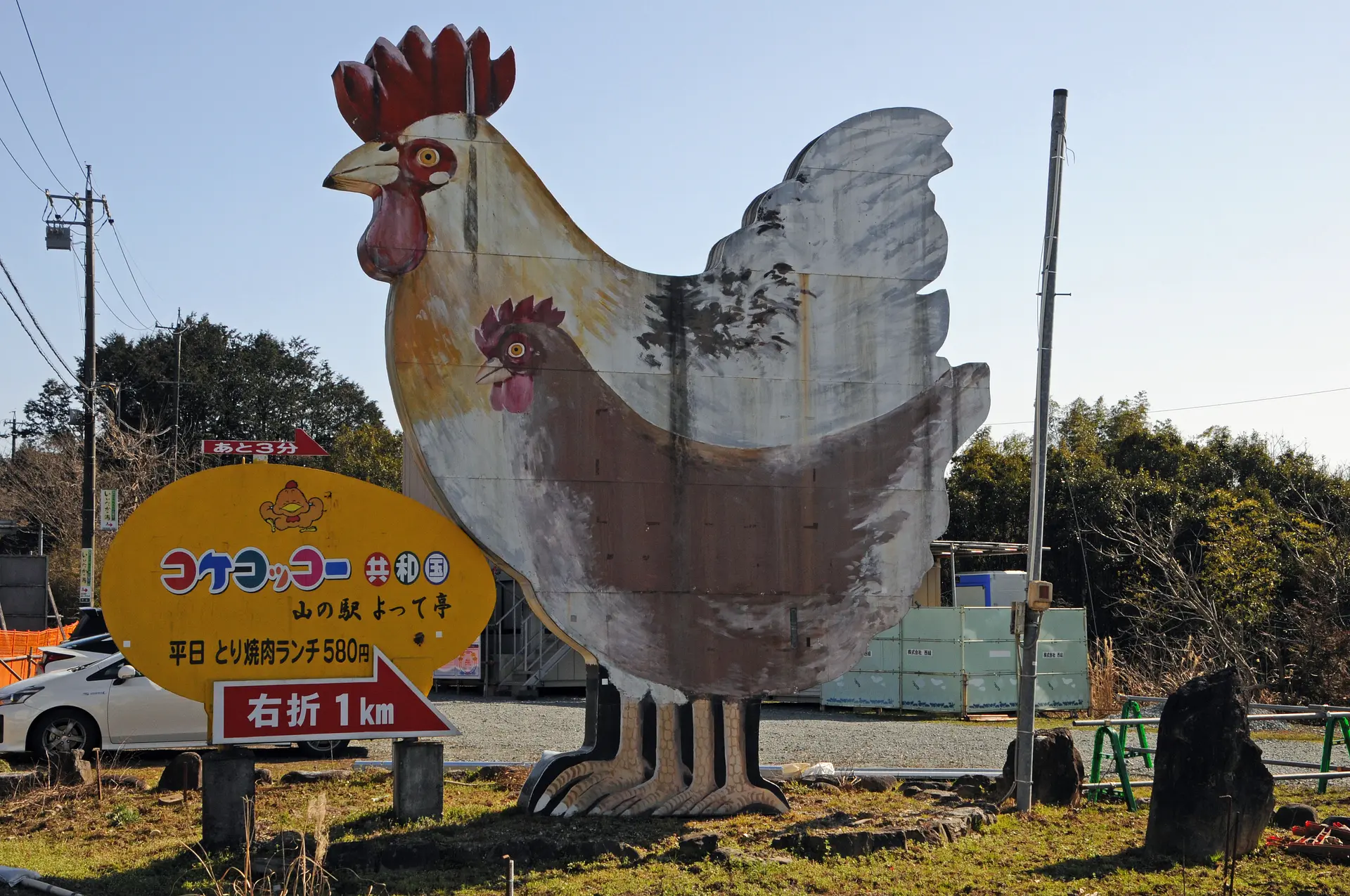
◆コケコッコー共和国
国道42号を2kmほど走ると右手に大きなニワトリの看板が見えてきます。ここまで来たら次の目的地・コケコッコー共和国は近くです。案内看板にしたがって走れば迷うことなく目的地に行けますが、ちょっとした上りなのでマイペースで上りましょう!
コケコッコー共和国は、平飼い有精卵のほか、鶏卵・鶏肉加工品を生産販売する施設。産みたての新鮮な卵を食べられるだけでなく、この卵を使った料理やスイーツを食べたり購入したりできる直売所「山の駅よって亭」もあります。
今回の目的地はもちろんよって亭です!
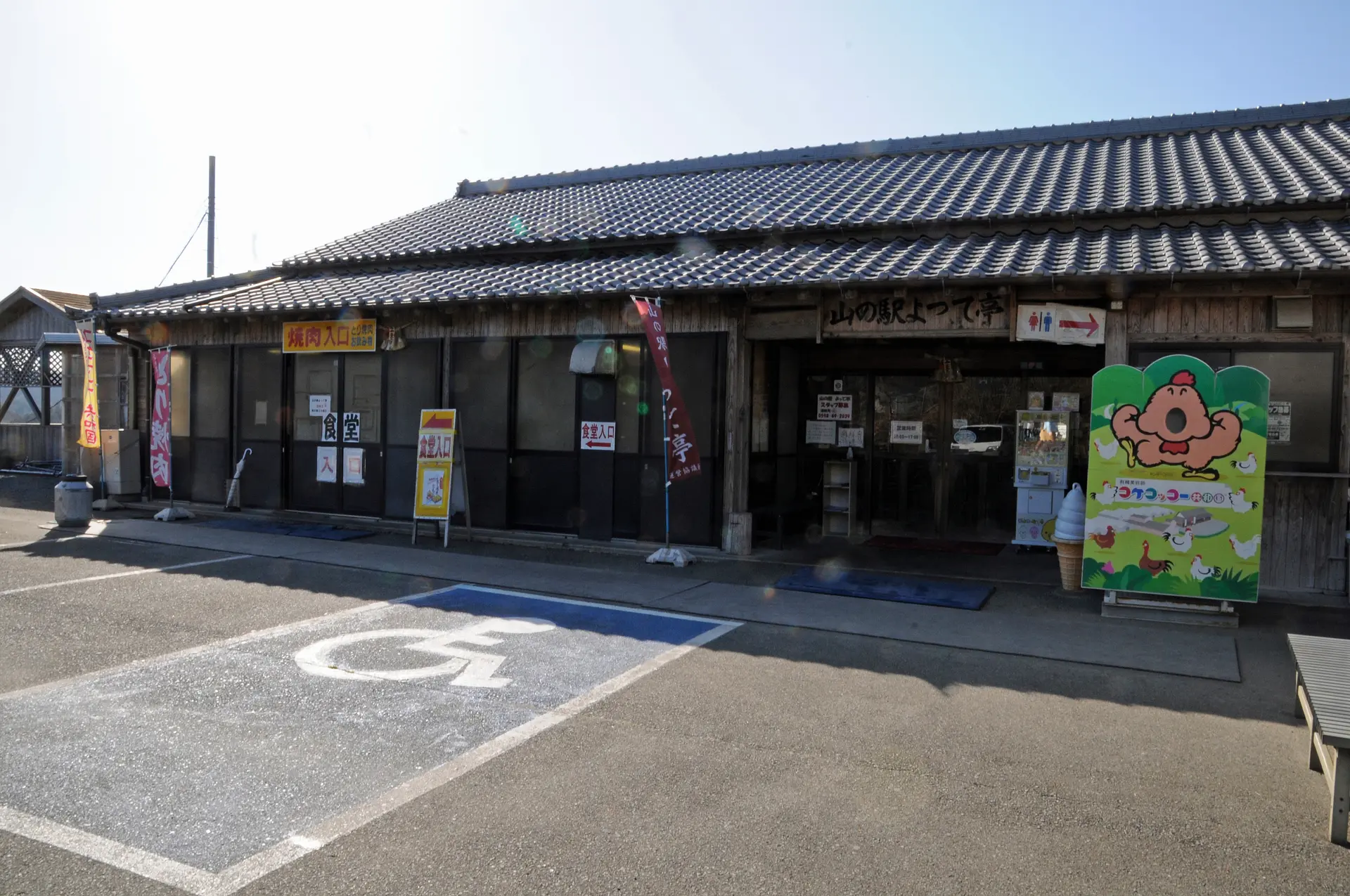
鶏舎を左手に、伊勢自動車道を右手に見ながら坂を上っていくと、やがて左手に山の駅よって亭が見えてきます。お店の前にはサイクルラックが設けられていてロードバイクを安心して止めることができます。
「ようこそいらっしゃいました!」
バイクを止めていたら、たまたま外にいらっしゃった店長の染川満夫さんが声をかけてくださいました。
「うちはサイクリストのお客様も大歓迎です! 最近はサイクリングの途中で立ち寄られるお客様も増えていて、さっきもロードバイクに乗ったお客さんがいらっしゃいました」
これはうれしいですね!
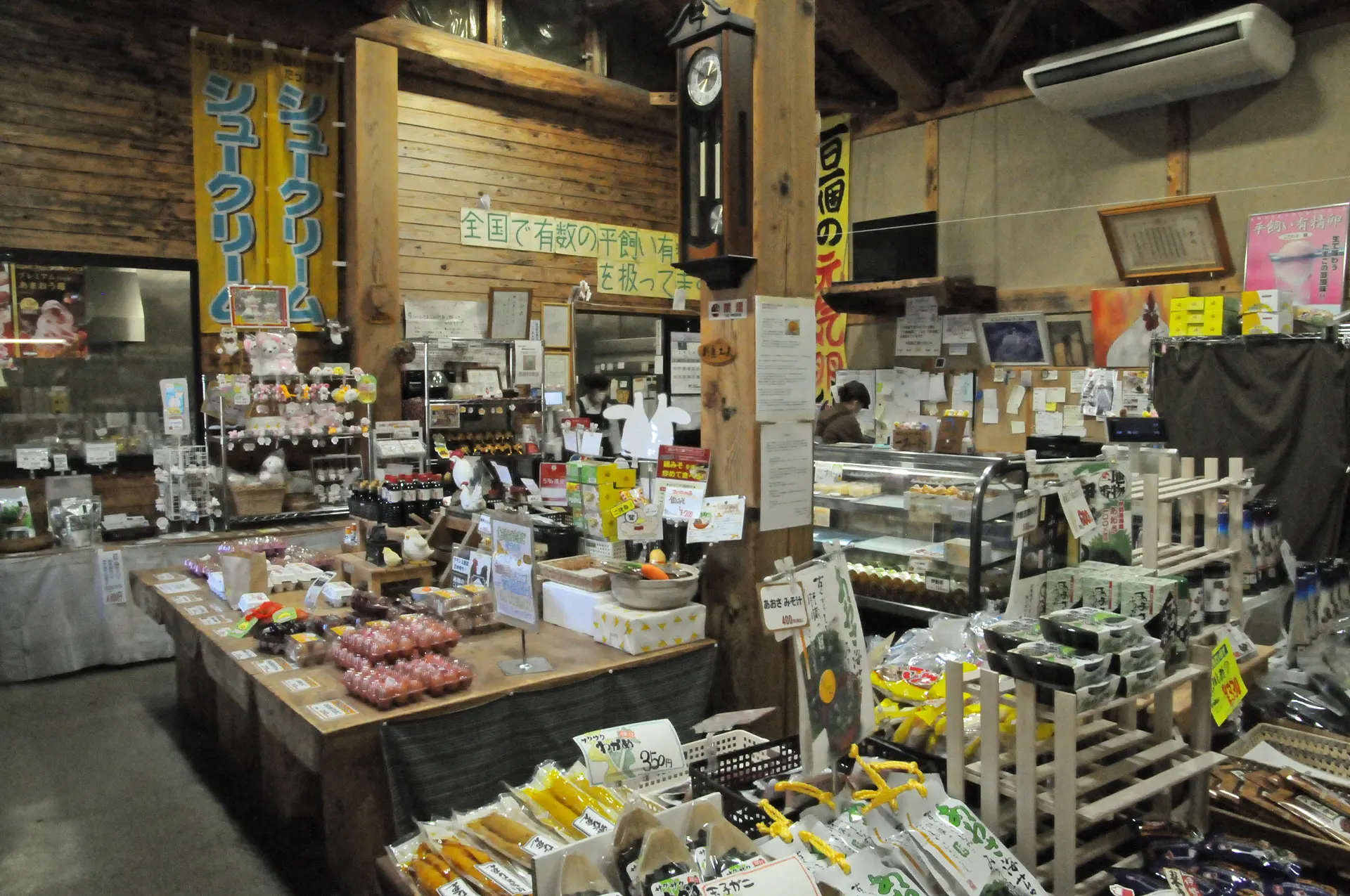
さっそくお店へ。
店内にはコケコッコー共和国の看板商品の平飼い有精卵やカステラをはじめとするスイーツ、鶏そぼろや炭火焼きの鶏肉などの食品、マヨネーズや卵かけご飯向けの醤油などが所狭しと並んでいます。隣には食堂も設けらら得ていて、卵かけご飯や鶏焼肉などのご飯もののほか、シュークリームやプリンなどのスイーツも味わえます。
「コケコッコー共和国のニワトリは、広大な土地を生かした平飼いという方法で飼育されています。より自然に近い環境でストレスが少ない状態で育つため、健康的でおいしい卵や肉を作るのに向いているんですよ」
と染川さん。
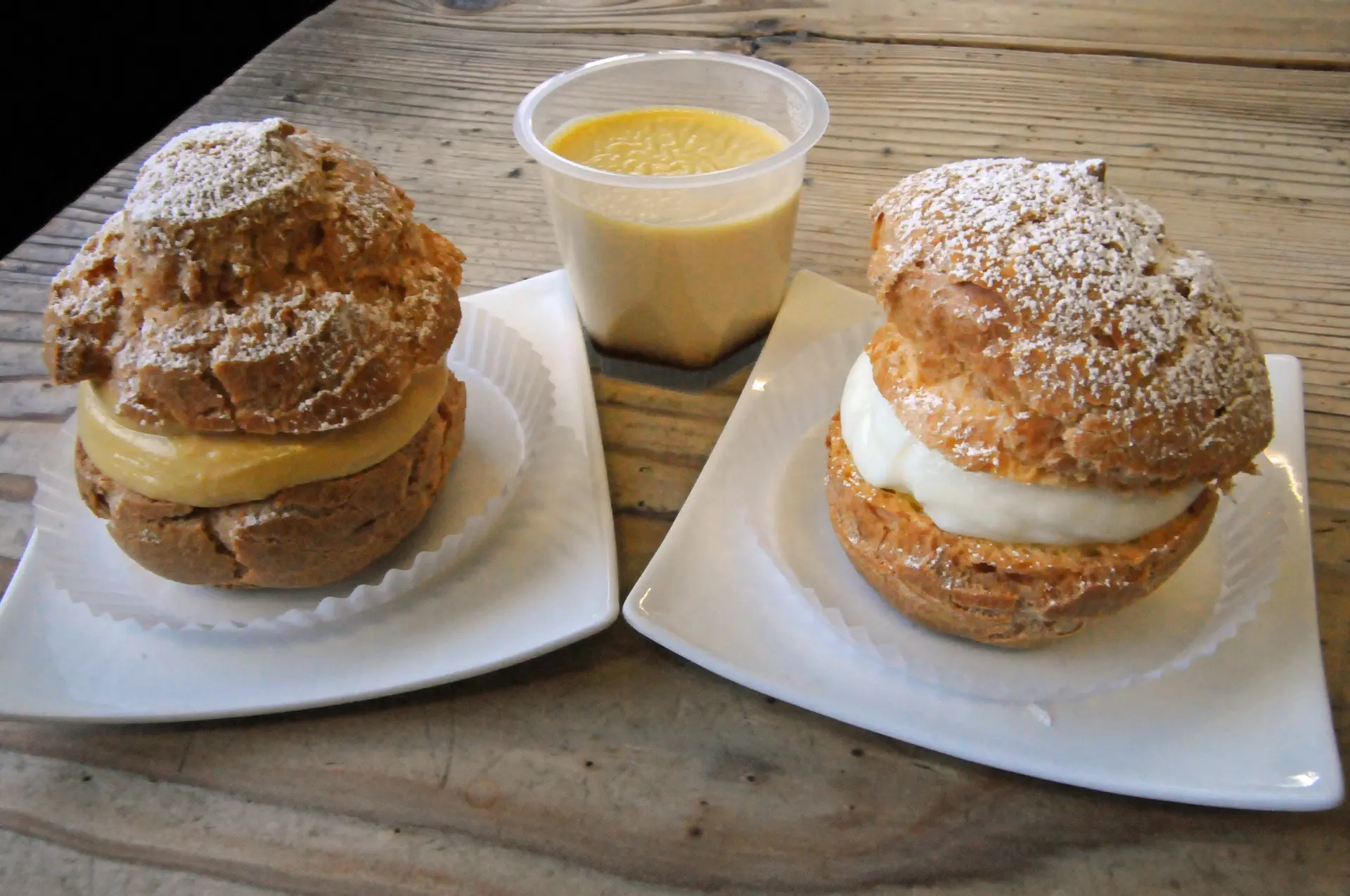
ちょうどおやつの時間なので、卵を使ったスイーツをいただくことにします! おすすめはこだわりプリンとシュークリーム。いずれもお店で手作りされていて、シュークリームは注文を受けてからクリームを詰めるそうです。
せっかくなのでプリンもシュークリームもいただこうと思ったら、シュークリームはカスタードクリームと数量限定のホワッシュという2種類あるではないですか!
どちらにしようか真剣に悩んでいたら、「ぜひ両方食べてみてください!」と染川さんのささやきが……。そうだな、今日もたっぷり走ったんだからシュークリーム2つ食べても大丈夫だよな、と誘惑に負けてプリンとシュークリームを2個いただくことにしました。
プリンは生地がしっかりとした弾力のあるタイプ。卵の風味がとても濃厚で、素朴ながらも素材である卵の良さが前面に出ています。カラメルソースの甘さとほろ苦さとも相まって後を引くおいしさです。
シュークリームは卵白ベースのホワッシュから。あっさりとした味で甘さも控えめ、どちらかというとさっぱり系ですが、卵の存在感が際立っています。一方カスタードは、卵の持つ濃厚さが存分に堪能できます。ホワッシュより濃厚ですが、こってりというわけではなく、甘さも控えめ。
僕は甘いもの好きなので、2個ぐらいは余裕で食べられます!
コケコッコー共和国 山の駅 よって亭
10:00~17:00
第2火曜
あり
伊勢自動車道「勢和多気IC」から約3分
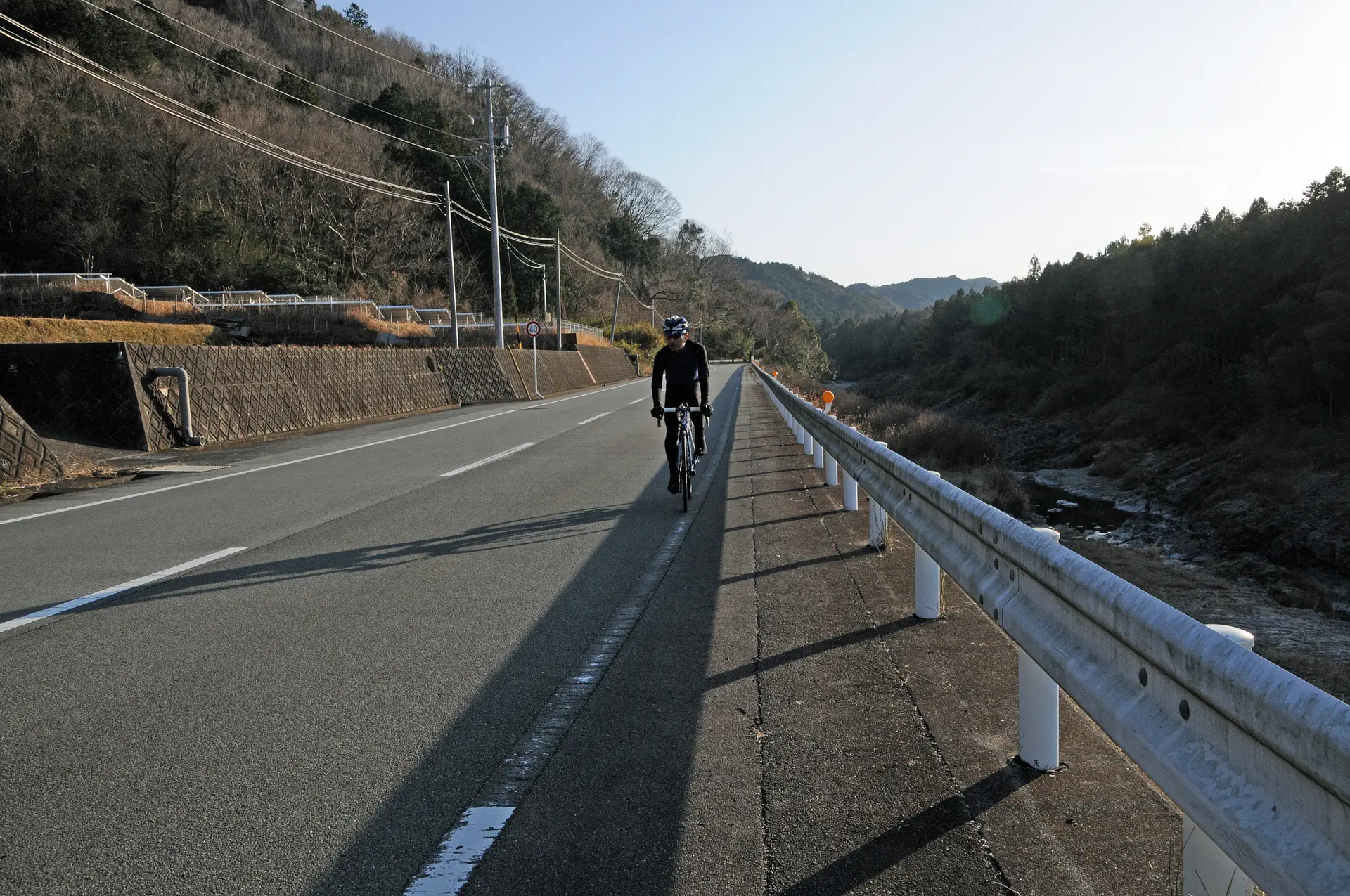
おいしいスイーツを堪能して、お腹も心も大満足! 僕は鶏肉も好きなので「今度はランチタイムに鶏焼肉を食べに来るぞ」と心に誓いお店を後にしました。
今日も楽しいサイクリングでした。あとはおいしさと旅の余韻に浸りながら、安全走行でスタート地点に戻りましょう。記事作成/浅野 真則

